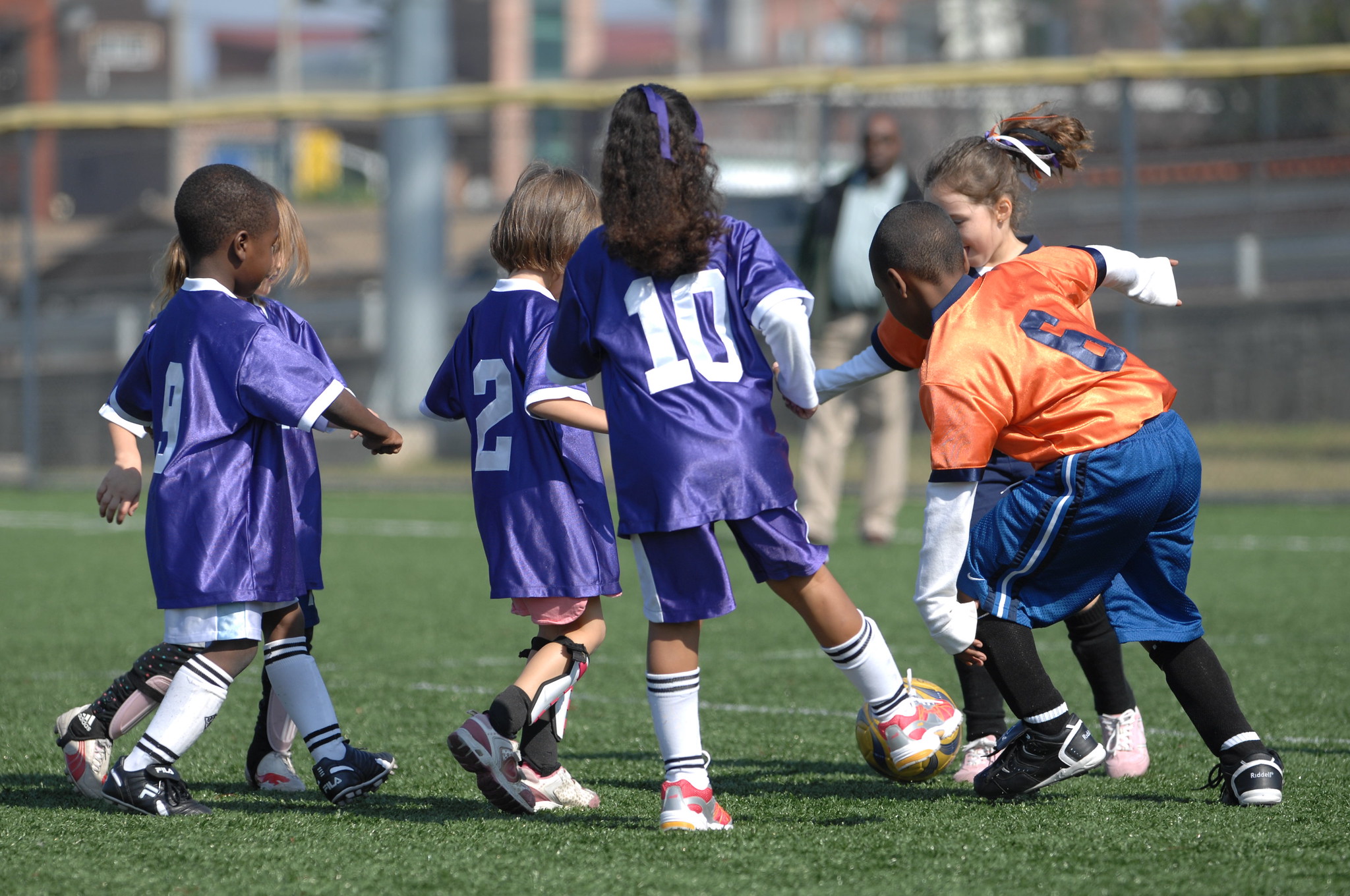According to Healthy People 2030, the percentage of children and adolescents who engage in physical activities is declining. From 2016-2017, it was reported that 58.4% of children aged 6-17 years participated in physical activities, and this percentage decreased to 56.1% for 2018-2019.[1] Exposing children to sports at a young age teaches them life-long skills and helps create lasting physical, mental, and emotional benefits. Sports improve one’s mood, academic performance, sleep patterns, healthy eating, teamwork, problem-solving skills, concentration, and self-confidence. All this helps combat Type 2 Diabetes, as well as reduce levels of stress, depression, and anxiety.
 Image attribution: USAG-Humphreys on Flickr
Image attribution: USAG-Humphreys on Flickr
Sports Combat Childhood Obesity
People who experience childhood obesity are at higher risk of developing chronic diseases such as type 2 diabetes, in addition to other serious issues such as depression, anxiety, and increased stress. Implementing sports into young lives can change the trajectory of children’s futures by decreasing the risk of type 2 diabetes, improving mental health outcomes, and promoting an overall healthy lifestyle.
Obesity increases the risk of type 2 diabetes, heart disease, and stroke. Children with obesity experience about four times the risk of developing type 2 diabetes compared to children with a healthy body mass index (BMI).[2] From 2017-2020, obesity prevalence in children was 19.7%, or about 14.7 million children and adolescents.[3] Therefore, physical activities can be used as a preventative intervention against obesity and diabetes. When children are active and involved in regular physical exercise, they are less likely to be obese and develop health complications. Physical activities enable children to engage in bodily exercise, promoting the body’s effective use of insulin and glucose and thereby reducing diabetes risks.[4],[5]
Sports Improve Mental Health Outcomes
The benefits of involvement in sports extend to helping children overcome experiences of childhood trauma. Studies have shown that 46% of young people in America have experienced at least one traumatic event, which increases to 62% for children living in poverty.[6] While the physical activity involved with sports is good for children’s bodies, the relationships sports foster are crucial in helping overcome experiences of trauma. Coaches are able to model supportive leadership and provide a safe adult relationship for the athletes, while learning how to play as a team is invaluable experience for building connections with peers in youth and later in adulthood. Finally, the structure of practices and games and the associated routines create predictability in an often unpredictable environment for children who have experienced trauma.[7]
Decreasing obesity rates can significantly impact a child’s social/emotional well-being and feeling of belonging, beyond the benefits of preventing diabetes. As public options for organized sports are less prevalent, and the state of youth sports becomes more private and expensive, it is more crucial than ever that access to organized sports remains equitable for all.
Increasing Equitable Access to Sports for Children
The concept of “play equity” makes it a priority to use available resources to make sports accessible to all and educate people on the importance of organized physical activity. The decline in children’s participation in organized sports is primarily due to increasing costs, time commitments, and the hypercompetitive nature of many of these activities. As these barriers increase, it is essential that as parents, public health professionals, and policy makers, we prioritize maintaining opportunities to access sports for all, especially low-income and under-resourced communities.
The increased costs of participating in organized sports are especially prohibitive for many low-income families. Almost all sports require a certain degree of resources such as athletic equipment, jerseys, fees for coaches and facilities, and requirements for entry, such as a physical exam. Participation also means that students must travel to practices and games, requiring transportation and its associated costs. If communities advocate for public investment into these opportunities, it may decrease individual costs while enhancing the overall health of its population. Also, publicly sponsored sports alternatives have access to public spaces such as parks, courts, and pools, which allow for no- or low-cost facilities and exposing children and their families to the outlets available to them outside of these activities.
Through the implementation of affordable and accessible programs for children of all ages and backgrounds, we have the power to decrease the risk of Type 2 Diabetes in future generations and create generations of healthy children.
Resources:
https://chjs.org/news/why-trauma-informed-sport-is-vital/
https://cctasi.northwestern.edu/child-trauma/
HRSA Disclaimer:
This publication is supported by the Health Resources and Services Administration (HRSA) of the U.S. Department of Health and Human Services (HHS) as part of awards as follow: Health Outreach Partners (HOP) National Training & Technical Assistance Cooperative Agreement totaling $847,285.00 with 0 percent financed with non-governmental sources and MHP Salud National Training & Technical Assistance Cooperative Agreement totaling $678,959.00 with 0 percent financed with non-governmental sources. The contents are those of the author(s) and do not necessarily represent the official views of, nor an endorsement, by HRSA, HHS or the U.S. Government. For more information, visit www.HRSA.gov
Footnotes:
[1] https://health.gov/healthypeople/objectives-and-data/browse-objectives/physical-activity/increase-proportion-children-and-adolescents-who-play-sports-pa-12/data
[2] https://www.endocrine.org/news-and-advocacy/news-room/2017/childhood-obesity-quadruples-risk-of-developing-type-2-diabetes
[3] https://www.cdc.gov/obesity/data/childhood.html
[4] https://www.cdc.gov/diabetes/prevent-type-2/type-2-kids.html
[5] https://www.johnmuirhealth.com/health-education/conditions-treatments/diabetes-articles/preventing-diabetes.html
[6] http://chjs.org/wp-content/uploads/2022/02/CHJS-WhitePaper.pdf
[7] http://chjs.org/wp-content/uploads/2022/02/CHJS-WhitePaper.pdf
